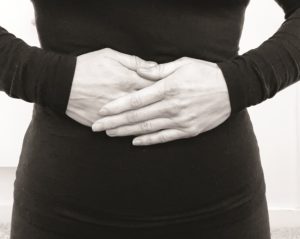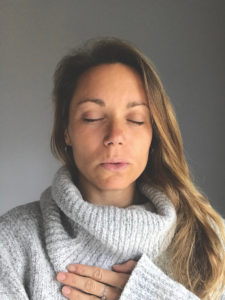There is much that we can’t control. This has always been true, of course, but it’s never been more apparent than now, in both our personal sphere and in the national one. Some of us have more time than we’ve ever had in our adult lives; others are running at full speed, every second of the day, and still coming up short. Some of us have taken deep breaths for the first time in four years; others are gearing up for a fight.
Mystics and psychotherapists alike teach us that accepting our lack of control can help us cope. But in the face of true crisis and trauma, that’s a daunting task. So much is unknown.
Breathing, however, is something we can control or simply let it run its course. Left alone, our breathing patterns are influenced by our nervous system, cardiovascular system, general health, environment, and current circumstance. This may prove to be adaptive, as with high-level athletes. But it may also be maladaptive, as with folks who struggle with anxiety.

Often, in a yoga class, we hear a teacher talk about “deep breathing.” Rarely do teachers break down what they mean by this — but they can’t explain everything in the space of an hour. What is a deep breath? Deep breathing looks wildly different from person to person. Some breathe into the very top of the chest, shoulders rising as they breathe in. Some breathe very loudly, and others breathe softly — slower and into the abdomen. In all of these variations, people either breathe through their noses or through their mouths, or a combination of both. What is best?
If we were to let habit run its course, we’d most likely do what a majority of us do: unconsciously breathe through our mouths, especially when the going gets tough, or when we exercise vigorously, or when we simply pick up the pace while walking. Most experts agree that breathing through the mouth is much less effective and efficient than nasal breathing and, potentially, can be harmful to our health.
A quick online search of nasal breathing will reveal that many dentists have been pushing nasal breathing over mouth breathing as a dental health practice, since there’s evidence that mouth breathing is linked to gingivitis, halitosis, and more. And then there’s mask breath — have you felt as if it’s going to kill you some days? Try focusing on breathing through the nose. If you have a cold or your sinuses are blocked, that may be close to impossible. But over time, with dedicated awareness and by simply reminding yourself to breathe through your nose, you will begin to feel the effects.
The nose is specifically created for effective breathing, with a built-in humidifier and nasal hairs to trap dirt and dust. When you breathe in through your nose, nitric oxide, an important cardiovascular signaling molecule, is released. Nitric oxide is a potent, naturally occurring vasodilator and bronchodilator, which means it helps open blood vessels and bronchial tissue in the lungs to expand and enhance your oxygen intake.
Nasal breathing isn’t only beneficial physically — there are psychological advantages as well. Over the past century, researchers have embarked in new fields, such as respiratory neurobiology, to study the brain, breathing, and the nervous system. It’s no wonder that people notice a difference after participating in yoga classes or focusing on deep breathing for the first time. Leading neurobiologists, such as Dr. Jack Feldman of U.C.L.A., have found in research that diaphragmatic breathing often helps alleviate stress and anxiety.
To practice diaphragmatic nasal breathing (or, more familiarly, belly breathing), it’s important not to multitask. While wearing nonrestrictive clothing, lie down somewhere comfortable and place your hands or a pillow on your stomach. Push gently on your abdomen (just below the rib cage) with your hands or simply feel the weight of the pillow. Now, breathe slowly through the nose to expand your abdomen against the pressure on your belly. Don’t go for broke — it’s important to let this be smooth and generally easy. Counting the inhale and exhale will keep your mind engaged and focused on the task. Breathe in (“1, 2, 3, 4”) and out (“4, 3, 2, 1”).
Once you get a handle on diaphragmatic nasal breathing while lying down, try it while you’re washing the dishes, watching TV, or doing the laundry. Then, slowly build up to practicing nasal breathing while walking or hiking. It’s just one more thing we can control that can have major benefits — like voting!

